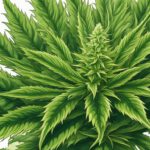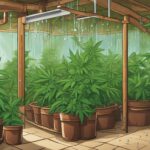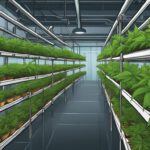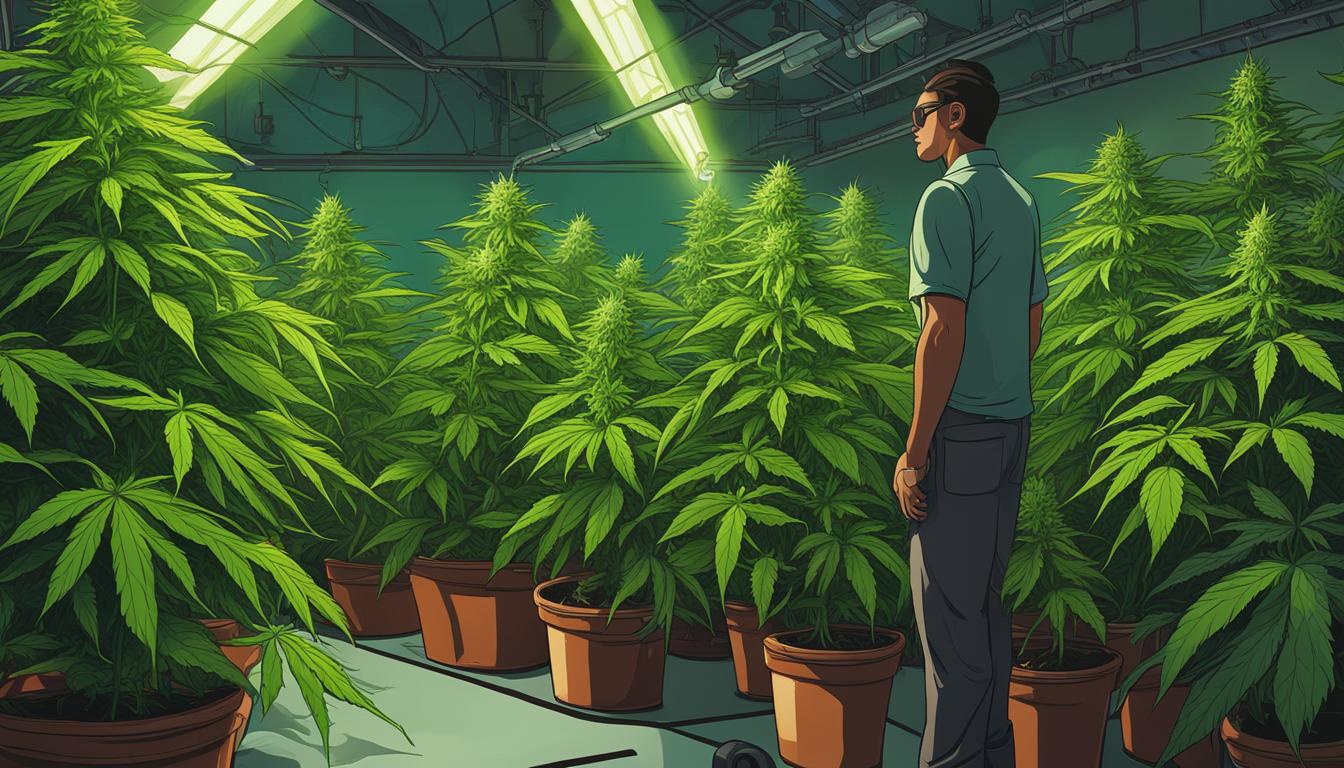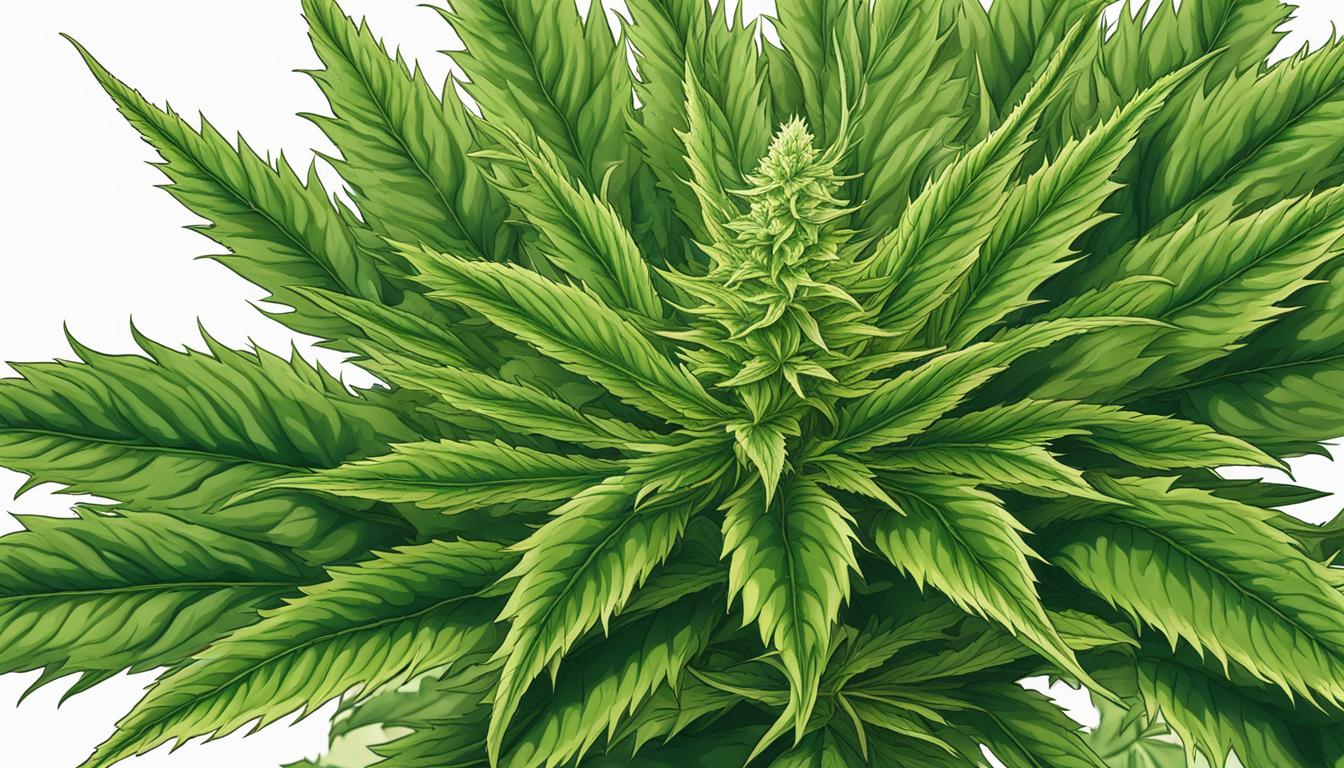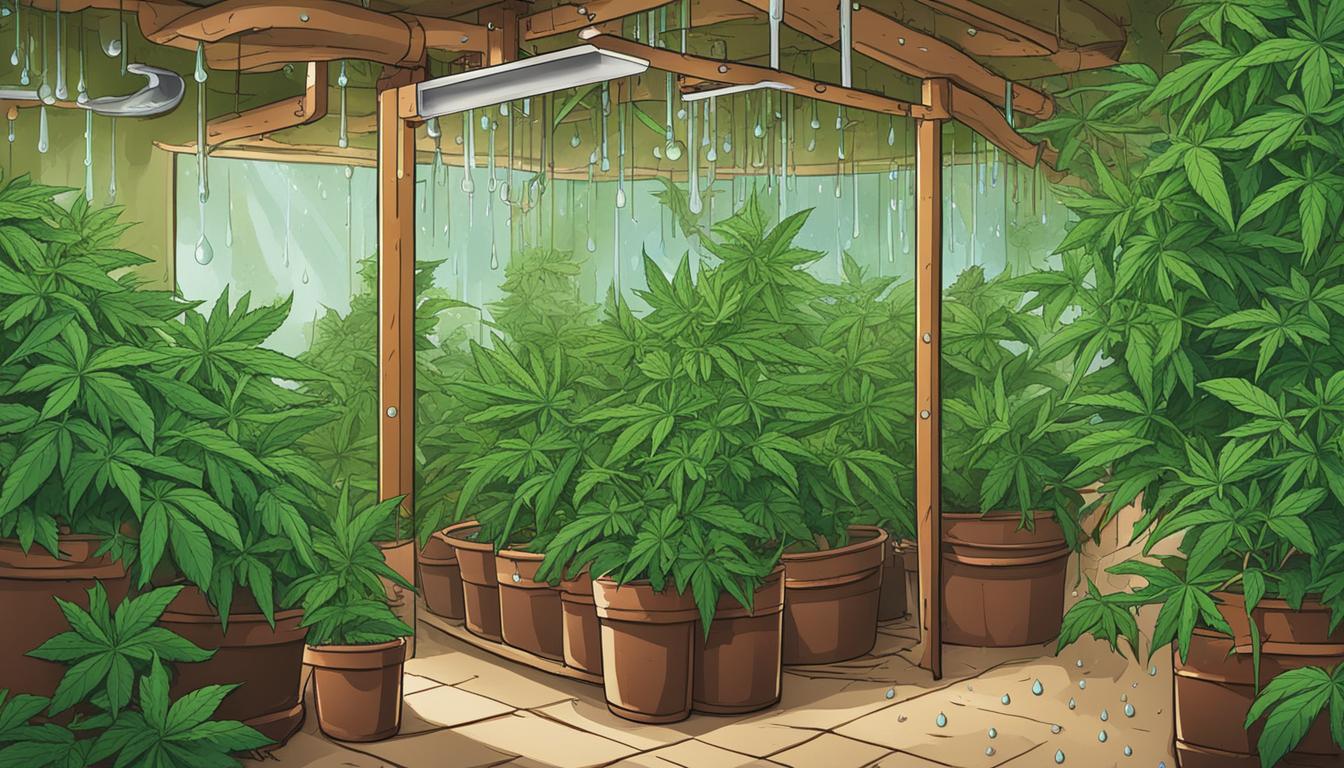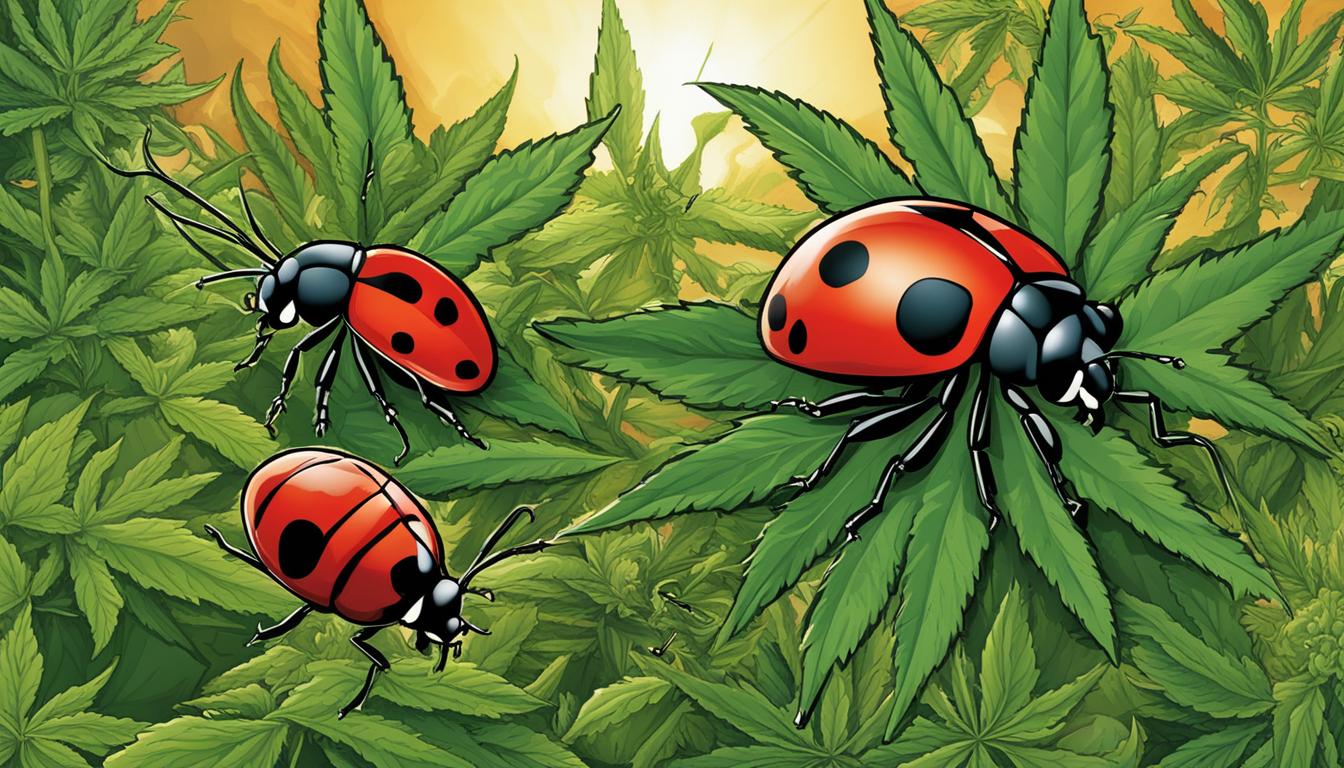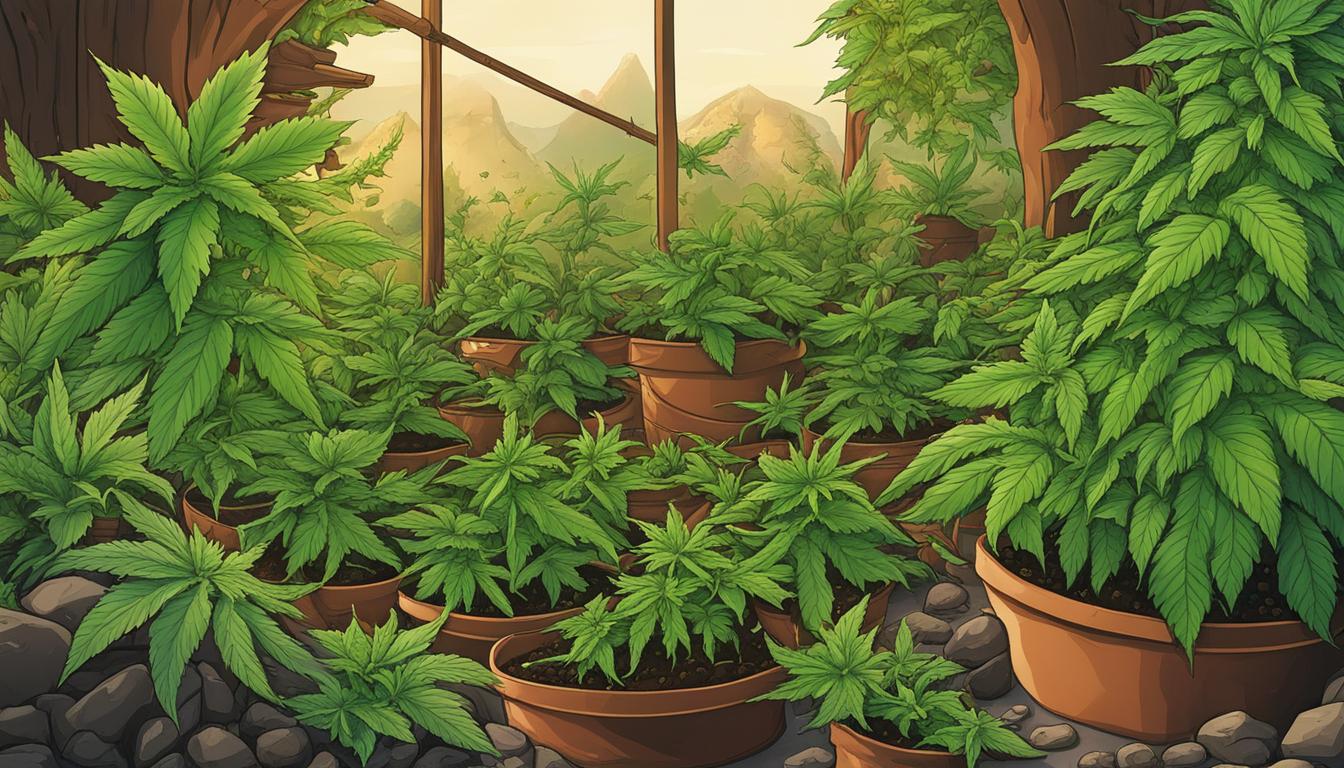As a cannabis cultivator, you understand how important it is to maximize the health and yield of your plants. Creating optimal growing conditions for cannabis is crucial for achieving these goals. By following the tips and techniques outlined in this section, you can ensure your plants thrive and produce high-quality buds.
From lighting and temperature to nutrient balance and ventilation, each factor plays a crucial role in cannabis cultivation. By mastering these elements, you can achieve healthy, robust plants that produce an abundant harvest. In this section, we will explore the key factors and techniques involved in creating the perfect growing conditions for cannabis.
Key Takeaways:
- Creating optimal growing conditions is essential for maximizing the health and yield of your cannabis plants.
- Factors such as lighting, temperature, nutrient balance, ventilation, and irrigation all play a crucial role in cannabis cultivation.
- By mastering these elements and providing the right care, you can achieve healthy plants that produce abundant harvests.
- Understanding the nutritional needs of your plants and providing the right fertilizers and supplements is essential for achieving the optimal nutrient balance.
- Adequate ventilation and air circulation are vital for healthy plant growth and preventing issues like mold and pests.
Understanding the Importance of Lighting
Whether you are growing cannabis indoors or outdoors, optimizing the lighting is crucial for healthy plant growth.
Indoor Cannabis Growing
For indoor cannabis cultivation, you can use artificial lighting to simulate natural sunlight.
| Type of Light | Best Used For | Pros | Cons |
|---|---|---|---|
| High-Intensity Discharge (HID) | Large indoor grow operations | High yields | Expensive to operate |
| Fluorescent | Small-scale grow operations | Inexpensive to operate | Lower yields than HID |
| Light Emitting Diode (LED) | Indoor grow operations of any size | Low energy usage | Higher upfront costs |
Regardless of the type of lighting you choose, make sure to position the lights at the proper distance from the plants to prevent burning and promote growth.
Outdoor Cannabis Growing
When growing cannabis outdoors, maximizing the amount of natural sunlight is key.
- Choose a location that receives plenty of sunlight throughout the day.
- Consider using shade cloth or other methods to protect the plants from excessive heat or direct sunlight.
- Ensure the plants are not obstructed by other structures or plants that could block the sun’s rays.
Remember to monitor the weather conditions and adjust as necessary to provide the optimal growing environment for your outdoor cannabis plants.
Overall, using the appropriate lighting techniques for indoor and outdoor cannabis cultivation is essential for maximizing yields and promoting healthy plant growth.
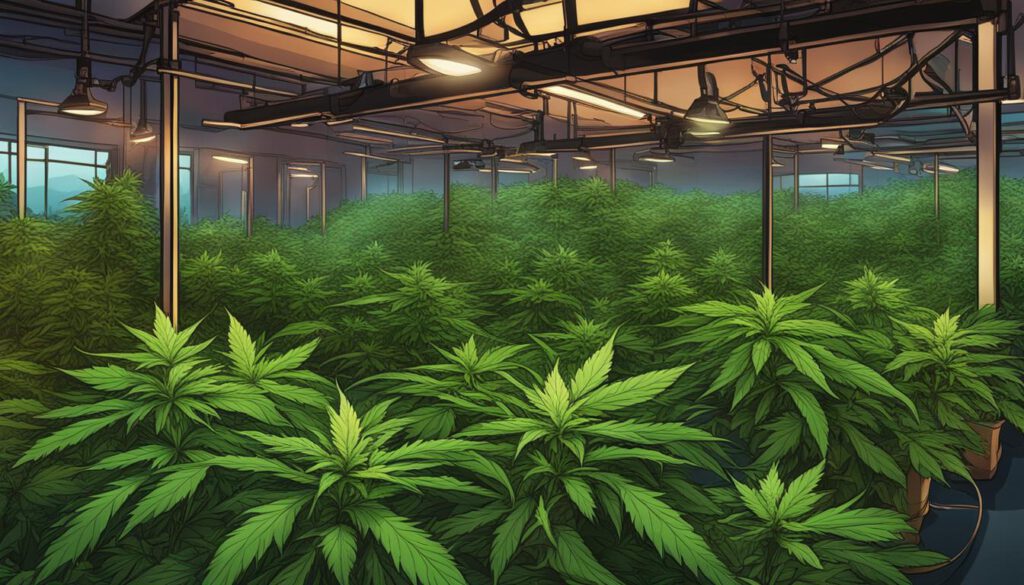
Nurturing the Right Temperature and Humidity Levels
To maximize cannabis growth and yield, it’s crucial to maintain the proper temperature and humidity levels.
Temperature: Cannabis plants thrive in temperatures between 68°F and 77°F during the day and around 10-15°F cooler at night. Fluctuations outside of this range can stress the plants and affect growth.
To manage temperature, you can use heating or cooling systems, depending on your growing environment. A digital thermometer and hygrometer can help monitor and maintain ideal levels.
Humidity: The ideal humidity level for cannabis plants varies by growth stage. In the early stages, humidity levels can range from 70-80%, gradually decreasing to 40-50% during flowering. High humidity can increase the risk of mold and disease, while low humidity can cause plant stress and nutrient deficiencies.
To control humidity, you can use a dehumidifier or humidifier, depending on your environment. Proper ventilation also helps promote optimal humidity levels.
Remember, the key to maximizing cannabis growth is to maintain consistent temperature and humidity levels throughout the growing cycle.
Cannabis plant care tips: Keep a close eye on temperature and humidity levels, making adjustments as needed. A hygrometer and thermometer are essential tools to help you maintain ideal levels.
Providing the Perfect Nutrient Balance
To optimize your cannabis yield, it’s crucial to provide the right balance of nutrients. The primary macronutrients required for cannabis growth are nitrogen, phosphorus, and potassium. Secondary nutrients such as calcium, magnesium, and sulfur are also important.
During the vegetative phase, your cannabis plants need higher levels of nitrogen to promote leafy growth. In contrast, during the flowering stage, they require more phosphorus and potassium to encourage healthy bud development.
It’s essential to choose the right fertilizers and supplements to meet your plant’s nutritional needs. Organic fertilizers are a popular option for cannabis cultivation as they provide a slower release of nutrients and promote microbial activity in the soil. However, synthetic fertilizers can also be effective if used correctly.
Essential Nutrients for Cannabis Growth
| Nutrient | Function | Deficiency Symptoms |
|---|---|---|
| Nitrogen | Important for vegetative growth and chlorophyll production | Yellowing of lower leaves, stunted growth, small leaves |
| Phosphorus | Essential for root development and flower production | Poor bud formation, purplish leaves, slow growth |
| Potassium | Important for water regulation and nutrient uptake | Poor bud development, yellowing leaves, weak stems |
| Calcium | Crucial for cell wall development and proper nutrient uptake | Brown spots on leaves, stunted growth, malformed buds |
| Magnesium | Necessary for chlorophyll production and enzyme function | Yellowing between veins, slow growth, poor nutrient uptake |
| Sulfur | Essential for the formation of amino acids and proteins | Yellowing of new growth, weak stems, poor nutrient uptake |
It’s important not to over-fertilize your plants, as this can lead to nutrient burn and negatively affect growth and yield. Use the recommended dosages provided by the fertilizer manufacturer or seek guidance from a cannabis cultivation guide.
By providing the right nutrient balance for your cannabis plants, you can significantly optimize your yield and achieve healthy, happy plants.
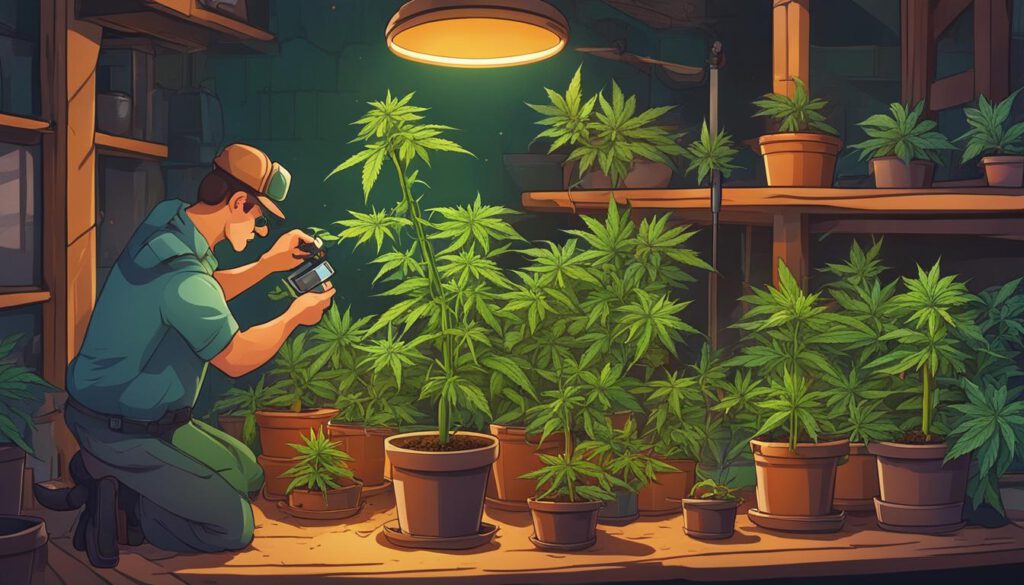
Ensuring Proper Ventilation and Air Circulation
When it comes to cultivating cannabis, creating a well-ventilated environment with proper air circulation is crucial. Poor air quality can lead to a variety of issues, such as mold, pests, and stagnant air, which can harm the health and growth of your plants.
One of the best practices for cannabis cultivation is to ensure proper ventilation. This can be achieved by installing fans or ventilation systems that provide a continuous flow of fresh air while expelling stale air.
Additionally, placing an oscillating fan within your growing space can improve air circulation and prevent any hot spots from forming. This will help regulate the temperature and humidity levels and provide optimal growing conditions for your cannabis plants.
Another important consideration is the positioning of your plants. Crowding plants too closely together can impede proper air circulation and create an environment that is ripe for mold and pest growth.
In summary, ensuring proper ventilation and air circulation is a crucial aspect of cannabis plant care. By implementing these best practices, you can create optimal growing conditions that promote healthy plant growth and high yields.
Managing Watering and Irrigation
Proper watering and irrigation are crucial for successful cannabis cultivation. If done incorrectly, overwatering or underwatering can lead to nutrient deficiencies, root rot, and stunted growth.
When determining the watering schedule for your cannabis plants, consider the following factors:
- The size of your containers
- The growing medium used
- The stage of growth the plant is in
- The environment (temperature and humidity levels)
Using the right amount of water is key. Typically, cannabis plants need about one inch of water per week. This amount can be adjusted based on environmental factors, such as high temperatures or low humidity, which can increase water needs.
It’s also essential to avoid overwatering, as this can lead to root rot, which can be fatal to your cannabis plants. To prevent overwatering, ensure that the soil is moist but not saturated. You can check this by sticking your finger about an inch deep into the soil. If it feels dry, it’s time to water.
When it comes to irrigation, there are various methods you can use:
| Method | Description |
|---|---|
| Hand watering | Applying water to the plants by hand, either with a watering can or hose. |
| Drip irrigation | A slow, steady drip of water is applied directly to the soil through a network of tubes, delivering water to the roots. |
| Flood and drain | A method that involves flooding the growing medium with water and allowing it to drain out, providing nutrients and oxygen to the roots. |
Whichever method you choose, ensure that it is consistent and delivers the right amount of water to your plants.
It’s also worth noting that cannabis plants require less water during the flowering stage, so adjust your watering schedule accordingly.
By keeping these tips in mind and monitoring your plants’ moisture levels, you can ensure that your cannabis plants are getting the right amount of water and avoid common issues that can stunt growth and reduce yield.
Conclusion
Congratulations! You’ve now learned the key factors and techniques for creating optimal growing conditions for cannabis. By implementing the guidelines and tips discussed in this article, you can maximize the health and yield of your cannabis plants.
Remember that lighting, temperature, humidity, nutrients, ventilation, and watering all play critical roles in cannabis cultivation. By balancing each of these factors, you can ensure your plants grow healthy and strong, ultimately leading to high-quality, high-yield crops.
Keep in mind that cannabis cultivation requires time, patience, and attention to detail. Stay vigilant and monitor your plants’ progress regularly. Additionally, don’t be afraid to make adjustments and experiment to find what works best for your specific growing conditions.
Happy growing!
FAQ
How can I create optimal growing conditions for cannabis?
To create optimal growing conditions for cannabis, you need to focus on factors such as lighting, temperature, humidity, nutrient balance, ventilation, and watering. By understanding and optimizing these factors, you can maximize the health and yield of your cannabis plants.
Why is lighting important in cannabis cultivation?
Lighting is crucial in cannabis cultivation because it directly affects the plant’s growth and development. Whether you are growing indoors or outdoors, you need to provide the right amount and type of light to ensure optimal cannabis growth and maximize yield.
How can I control temperature and humidity for cannabis cultivation?
Maintaining the right temperature and humidity levels is essential for healthy cannabis growth. You can control temperature by using heaters, air conditioners, or ventilation systems. Humidity can be managed through dehumidifiers or humidifiers. Monitoring and adjusting these factors based on the specific needs of your plants is crucial.
What are the essential nutrients for cannabis plants?
Cannabis plants require a balanced mix of nutrients such as nitrogen, phosphorus, potassium, calcium, magnesium, and trace elements. Providing the right fertilizers and supplements to meet these nutrient needs is crucial for optimal cannabis growth and maximizing yield.
Why is ventilation and air circulation important in cannabis cultivation?
Adequate ventilation and air circulation help regulate temperature, humidity, and prevent the buildup of stagnant air. Proper airflow is essential to prevent issues like mold and pests and to promote healthy cannabis growth. Ensuring proper ventilation systems and techniques will contribute to optimal cultivation conditions.
What are the best practices for watering and irrigation in cannabis cultivation?
Watering and irrigation should be done carefully to prevent overwatering, root rot, and nutrient deficiencies. It’s important to water your plants when the top inch of the soil feels dry, providing enough water to saturate the root zone without causing waterlogged conditions. Using well-draining pots and managing irrigation systems can help achieve optimal watering practices.

